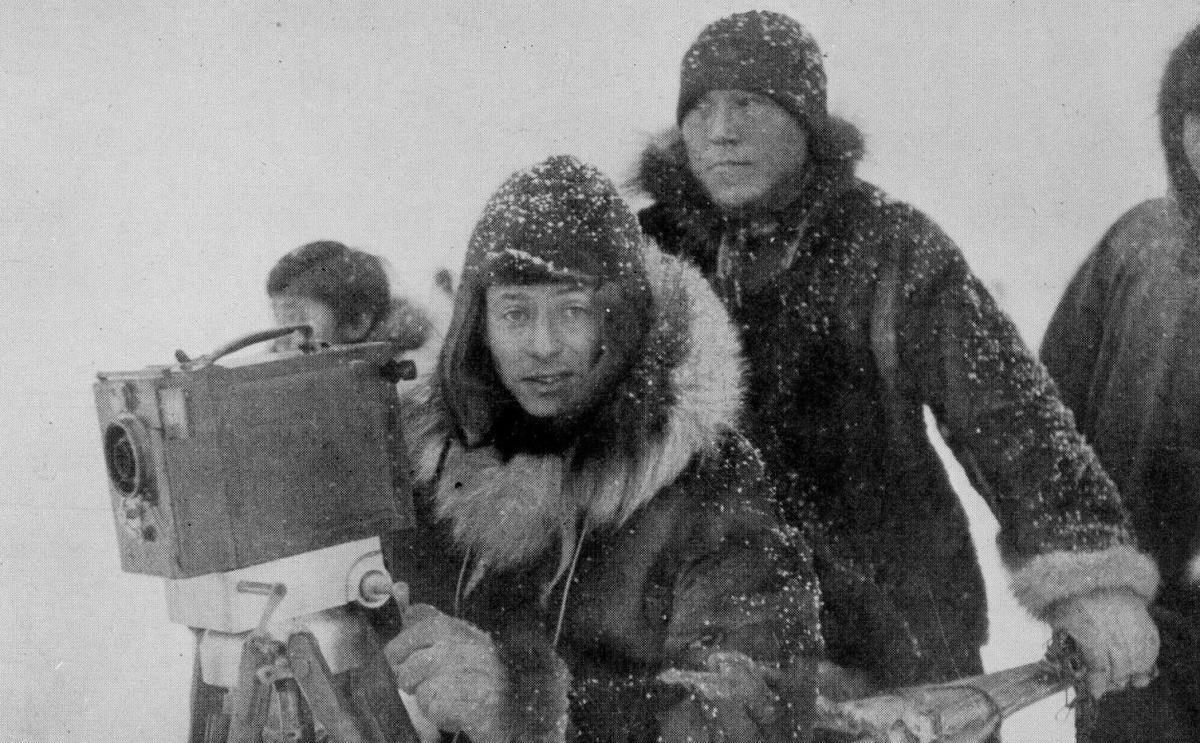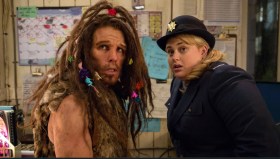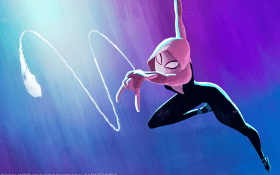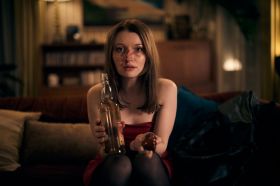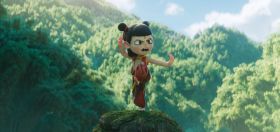Drama and documentary producer Andrew Wiseman is normally a calm and quiet person, so he caused a small surprise when he popped up in public with a gorgeous speech about documentary. With some fine examples and a great ability to simplify, he tackles some those twisty questions about truth, authenticity, process and funding.
His audience at the recent Documentary Australia Foundation presentation in Melbourne thought it was excellent, and it is our pleasure to reprint it here. After thirty or so years as producer, Dr Wiseman now works for Film Victoria as a production executive. He called the slightly revised version of his speech:
Documentary: An Authentic Search for the Truth
Good afternoon.
Before I begin I would like to acknowledge the Traditional Owners of the land on which we are meeting. I pay my respects to their Elders past and present, and to the Aboriginal Elders of other communities who may be here today.
Thank you to DAF for providing the opportunity to speak this afternoon.
In 1921, on the wild shores of Hudson Bay in Canada, American explorer and filmmaker Robert Flaherty was filming an Inuit man construct an igloo. The Inuit man’s real name was Allakariallak but he came to be known as Nanook. We know Flaherty also filmed Nanook on a hunting expedition and other activities and I think, given what we know about Inuit craft, it’s reasonable to speculate that during that extended period of filming Flaherty would have also seen Nanook carve a piece of ivory. It’s also reasonable to speculate that if the filmmaker had asked Nanook what he was carving Nanook would have been utterly bewildered.
Why might Allakariallak have had that response to what appears to be a reasonable question? We’ll get to that soon.
Many filmmakers, commentators and reviewers have spoken eloquently about the importance and impact of the documentary form. I’m going to take it as read that there is a consensus about that position in this room so I’m not going to duplicate those observations today.
Rather, I’d like to make an assertion that might be considered a bit bold, maybe even heretical to some in this audience but let me give it a crack and see where it takes us.
And my contention is this: that documentaries are not about the truth, at least not initially. Documentaries may, however, be about an authentic search for the truth.
Now, on first blush the distinction between these positions may seem a bit subtle but in the next ten minutes I’d like to explore what I believe are the crucial differences in those two statements. And by doing so I want to investigate three interconnected ideas:
In the world of documentary…
- What constitutes an authentic search?
- What are the consequences of that search?
- How can a funding agency respond to the challenges of the authentic documentary journey?
Firstly, let me deal with a key word in this proposition. The word ‘truth’ is, of course highly contestable, multi-layered and kind of tricky. For the sake of this discussion we could substitute the idea of striving to understand the real essence of an idea or event, it’s sine qua non – what is the substantial core rather than what the surface appears to indicate. I also think it’s worth noting that many definitions of what a documentary is – and there are a few – don’t use the word truth in their descriptions.
- What constitutes an authentic search?
So what’s an authentic search and why do I think it’s a fundamental matter when it comes to crafting a successful documentary – in any form? Let’s begin by flipping the motivating question. Is there such a thing as an inauthentic search? I think the answer is yes.
While it’s hard to imagine a filmmaker embarking deliberately on an inauthentic search, if an artist begins a project with a set of presuppositions, if they have a resolutely fixed position on the subject at hand or are unaware of the possibility for unconscious bias then I think the journey may be off to a rocky start, an inauthentic start. The inauthentic search is a bit like the rhetorical concept of begging the question when the central claim and the major premise of the argument assumes the truth of the conclusion rather than providing evidence for it.
An authentic approach contains a number of constituent elements. It’s genuine – driven by a curiosity which seeks to learn and uncover. Many forms of documentary don’t seek to proselytise, at least not at the outset. The authentic search for truth is based on a foundation of open enquiry and, crucially a willingness to change track if needs be.
Now I need to pause here and acknowledge that documentaries come in many shades and modes of presentation. Academic Bill Nichols lists six of them; Poetic, Expository, Observational, Participatory, Reflexive and Performative and then readily concedes that this list may be inadequate and that there are hybrid combinations. The search process will vary for each project and while what I’m proposing may seem more aligned with observational material I think, in many ways even more heavily researched and scripted documentaries benefit from this approach and I would include here works on new platforms such as VR as well.
I think recent Australian documentaries such as: In My Blood it Runs directed by Maya Newell; No Time for Quiet by Hylton Shaw and Samantha Dinning; Mountain by Jennifer Peedom and, going back a few years Forbidden Lies by Dr Anna Broinowski, all, in their own way demonstrate an authentic search for the truth even though they adopt very different styles. And of course this list represents a tiny fraction of many very fine Australian documentary works whose authorship is clear.
You see I think one of the connecting threads about the documentary journey, regardless of the mode being utilized is the notion that the maker is striving to peel back the layers of a subject – to get under its skin and, crucially see what might be revealed in a new light. My claim is that this should be fascinating and compelling for both the viewer and the maker; there should be surprises for both in the journey. To be surprised and alive to what might occur is part of the authentic approach.
Authenticity conjures notions of being open to the creative possibilities that emerge, but it is more than this – it’s being wide-eyed, innocent even, travelling expectantly and being susceptible to change.
Let me illustrate this point with two examples from two very different artists. The first is a filmmaker – Robert Flaherty who I have already mentioned. Now I readily acknowledge the irony of using Flaherty as an example to talk about authenticity because he has been criticized for the level of manipulation in his works but the change in his production methods over time will serve to illustrate my claim.
Let’s return to that story of Nanook – why would he be bewildered if Flaherty asked him what he was carving in a piece of ivory? The answer lies in how the Inuit approached their craft.
In a work entitled Notes on Eskimo Art Film, Professor Edmund Carpenter makes the observation that as they developed their carvings the Inuit were examining and mulling. Regarding Nanook and his carving he writes, and I quote: “then he brings it out; seal, hidden, emerges. It was always there, he didn’t create it; he released it, he helped it step forth.” The language is kind of quaint but I really like this idea of the authentic artistic search letting the subject under examination reveal itself, to step forth.
So, if this bears some relationship to how the Inuit undertook their carvings, how could Nanook possibly know what shape he might be carving until his initial efforts released the form already within the ivory? For him the question presumably should have been something like, what does the ivory hold in its midst and then how will you respond? For Nanook form would have followed approach and process – his authentic search for the truth of the carving involved being patient, respectful of the material he was dealing with and not imposing a preconception of what he wanted to make.
I think this approach has much to offer the filmmaker. It suggests that in some documentary subjects there is an inherent veracity that is released by the filmmaker and not applied. The research and development method requires examination, a period of mulling and even, according to Nichols, in the first stages of the actual doing, a sense of aimlessness. At some point in the life-cycle of the project, after the initial development phase, the artist sets about shaping, honing and completing the work; dictating the final form that flows from their hands. But even with this mind, given the likelihood that some documentaries will shift quite dramatically during writing, filming and editing, it’s arguable that an authentic search for the truth and its meandering paths is part of the warp and the weft of the creative process until completion. That malleability is one of the delights of the form.
After filming with Nanook, Flaherty drew on this approach of releasing what lies within and while he was not above various forms of manipulation in his films he was much taken by Nanook’s method.
The second artist predates film and therefore predates the Lumière brothers and their first experiments with making ‘actualities’ – what would come to be known as documentaries.
Romantic poet John Keats famously introduced the idea of Negative Capability. When thinking about what qualities allowed great writers to shape their words he said in a letter to his brothers:
I mean Negative Capability, that is when a man (sic) is capable of being in uncertainties, mysteries, doubts, without any irritable reaching after fact & reason.
Stephen Hebron, a curator at the Bodleian Library, Oxford University suggests that Keats is not using the word ‘negative’ in a pejorative sense, but rather to convey the idea that a creative artist’s “potential can be defined by what he or she does not possess…in this case a determination to work everything out,” and also by displaying a willingness to let what is “mysterious or doubtful remain just that”. And if the artist doesn’t rush to judgement as they pursue their work then this may lead to a greater sense of empathy for the subject being explored.
Though separated by time and craft I think Flaherty and Keats and maybe even Nanook, speak to each other and that there are commonalities in their artistic approach – commonalities that link this idea of an authentic search for the truth.
I think the connection between this concept of negative capability and the authentic search in documentary filmmaking is that it speaks to the idea of not only being curious and letting the form emerge, but often doing so without rushing to conclusions and therefore being alive to the possibilities that arise in the journey. Also, it makes the patient filmmaker potentially more comfortable with doubt and uncertainty and maybe more empathetic.
If we accept some of this, and I realise that some of you here today may not, what are the consequences? There are many but here are three.
- What are the consequences of the search?
The authentic search takes time and it takes time at each stage of the documentary journey, from inception to completion. Robert Flaherty is reputed to have said, “The longest distance between two points…is a motion picture.” I don’t think he was being gratuitously pessimistic. He was alluding to a necessary condition of the artistic journey.
It takes time because the search is rarely linear and uninterrupted. You don’t necessarily want it to be linear – especially in development. Examining, mulling, testing, these are imaginative pursuits that benefit from multiple attempts.
And because it takes time it takes resources.
Time, money and thirdly an appetite for reasonable risk, which is where film agencies play a part.
- How can a funding agency respond to the challenges of the authentic documentary journey?
So, how does the authentic search for truth in documentary and its consequences impact on a screen agency such as Film Victoria?
Well, in all sorts of ways. Working within the very clear goals of bringing documentaries to an audience and justifying considerable financial input, I think an agency should acknowledge that the artistic journey is one that should not only be un-blinkered but also sometimes unrushed.
It’s important to let an idea percolate and to assist a filmmaker to chip away at the material, much like Nanook and reveal the form within.
Working in concert with filmmakers, agencies can strive to find that critical balance between providing space for the filmmaker to embark on the authentic search for truth and assisting to bring the results of that search to an audience.
I’ll let Robert Flaherty’s own words tie together some of these concepts of open-hearted investigation and the artistic downside of being too focused, too early. As quoted in Paul Rotha’s biography of the filmmaker:
All art is, I suppose, a kind of exploring…that’s the way I started filmmaking. I was an explorer first and a filmmaker a long way after. There’s a saying among prospectors – go out looking for one thing, that’s all you’ll ever find.
One last thought. Flaherty’s film, Nanook of the North was released in 1922. But Flaherty first began filming in Hudson Bay in 1916. In fact he shot 70,000 feet of film which he took back to Toronto and began editing. While editing, a cigarette fell into the editing bin and all of the original negative went up in flames. Undaunted, Flaherty tried again five years later and almost certainly made a better film – the longest distance between two points…
The long but rewarding journey for the documentarian requires an openness, the courage to doubt and be in a place of uncertainties, respect for the raw material and its promise and, finally, as demonstrated by Flaherty it requires great persistence. Perhaps if you can draw all of these elements together there’s a chance that a terrific documentary can be crafted.
Maybe one of the elements of stories that work, of films that eventually get to the very essence of an idea, is a really vigorous engagement with an authentic search for the truth.
———
The story of Kivalina, captured in the image, is salutary in itself. Made as an imitation of Nanook of the North, it was spotted by a New York Times reviewer in 1925 who had some Jazz Age fun with its pretensions.
